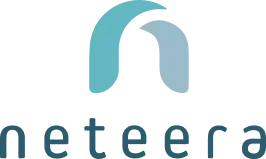Research validates that early warning of deteriorating condition occurs on average 5 days before hospitalization with Neteera’s continuous monitoring technology.
Lewes, DE, October 2025 — Neteera announced results from a clinical study demonstrating that its contactless monitoring system achieved high accuracy in detecting impending hospitalizations among nursing facility residents, providing an average warning of 5 days for clinical intervention to occur.
The comprehensive retrospective study, conducted in partnership with TapestryHealth across five nursing facilities over four months, monitored 612 residents and analyzed 96 hospitalization events. The results provide clinical evidence that Neteera’s FDA-cleared vital sign monitoring technology can deliver early warnings, providing a widened window for care teams to intervene and ultimately reduce avoidable hospitalizations proactively.
Key Clinical Results
-
89% of respiratory and cardiac deteriorations were detected
-
77% of all hospitalization events were detected
-
First alerts were issued on average 5 days before admission
"This clinical evidence validates that Neteera's technology can help care teams identify at-risk patients earlier to reduce avoidable hospitalizations while improving patient care," said Isaac Litman, CEO of Neteera. "Clinical teams equipped with early warning alerts can intervene proactively, transforming emergency responses into treat-in-place care."
Isaac Litman, CEO, Neteera
Catching Critical Changes Occurring Between Manual Checks
Healthcare providers typically check vital signs every four to eight hours in post-acute and long-term care settings. However, patient conditions don’t deteriorate on schedule. Critical changes in patient condition often occur between measurement intervals and over time, which can mean that gradual increases in respiratory rate and subtle shifts in heart rate patterns may not be caught.
Left undetected, these missed deteriorations have consequences that extend beyond individual patient outcomes. Unplanned hospitalizations cost the healthcare system billions annually, expose facilities to CMS readmission penalties, and increase liability risks. For patients, emergency transfers often result in longer recovery times, increased complications, and the trauma of unexpected hospitalization.
Continuous Monitoring Fills Gap in Clinical Observation
The Neteera System utilizes ambient sensor technology to detect micro-movements from the patient’s heartbeat and breathing activity through clothing and bedding. Patient comfort is ensured by eliminating the need for wearable devices, cameras, or direct patient contact.
Proprietary AI algorithms analyze continual, real-time data, detecting and tracking each patient according to their baseline. When a deviation exceeds clinically defined thresholds, an alert is sent to the care team days before periodic monitoring would catch the changes.
This around-the-clock surveillance complements existing care protocols without disrupting workflow or requiring patient compliance. Integration with electronic health records enables seamless documentation and supports clinical decision-making across care teams.
Clinical Validation in Real-World Settings
The study was conducted from November 2024 to February 2025 in partnership with TapestryHealth across actual care delivery environments, not laboratory conditions.
"Early identification of patient deterioration fundamentally changes care delivery from reactive to proactive. When clinical teams receive alerts five days before emergency hospitalization becomes necessary, they can initiate targeted treatments and often resolve underlying conditions without hospital admission."
Dr. Hans Jenkins, CMO, TapestryHealth
Download the study.
More resources for integrating continuous monitoring into a proactive care approach.
Press Release Distribution
A press release was first distributed via PR Newswire on October 1, 2025, and has been published by multiple news outlets and industry publications, including AP News, Yahoo Finance, and MarketWatch.


